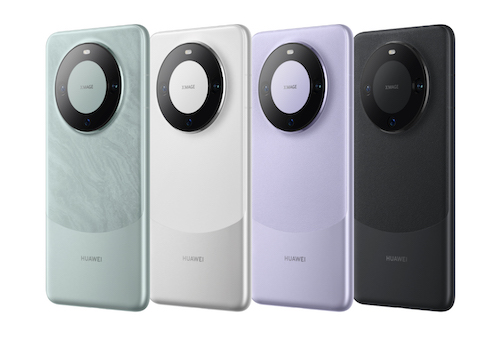Huawei Technologies Co.’s Mate 60 Pro smartphone employs an unusually high proportion of Chinese parts, in addition to its main processor, a sign of the country’s progress in developing domestic tech capabilities.
The Huawei phone is powered by a 7-nanometer Kirin processor that was designed and manufactured in China, a breakthrough for the nation’s chipmaking sector, Bloomberg News reported this week. Yet Huawei also tapped Chinese companies for many of the other components within the device, according to the latest round of analysis from TechInsights’ teardown of the device for Bloomberg.

These unheralded companies contributed to assembling a device that relies on little tech from overseas: the teardown has so far identified only SK Hynix Inc.’s memory as a component of foreign origin, although not all of the parts have been scrutinized yet, including the display.
Shenzhen-based Huawei, which used to outsource its chip fabrication to Taiwan Semiconductor Manufacturing Co., was cut off from the market for advanced chips and chipmaking by US sanctions in 2020. Since then, the company’s been researching alternative means to produce the processors and wireless chips that it designs in-house. Its latest phone features the Kirin 9000s processor, fabricated by Shanghai-based Semiconductor Manufacturing International Corp.
“With a component lineup almost exclusively ‘made in China’ – except for the SK Hynix LPDDR5 and NAND Flash memory — Huawei appears to have achieved the impossible, despite the adversities of the technological embargo,” said Radu Trandifir, a technical fellow at TechInsights.
Korean memory maker SK Hynix said in a statement on Thursday that it’s investigating how Huawei obtained its chips because it has not done business with the Chinese firm since US sanctions were imposed.
Before its blacklisting, Huawei relied on American suppliers, from Skyworks Solutions Inc. to Qorvo Inc., for the most essential communications chips. The company kept its mobile business going over the past couple of years by releasing Qualcomm Inc.-powered devices limited to 4G wireless speeds.
Now it has turned to domestic help, Huawei is relying on the likes of little-known chipmaker Runxin, based in China’s Guangdong province. The biggest shareholders of Runxin are backed by state capital, according to company registration database Tianyancha.
The Mate 60’s wireless speeds are on par with 5G devices, even while running on the locally made components. At the same time, the device isn’t draining its battery unusually soon, according to testing by Bloomberg News.
Another key feature touted by Huawei is the Mate 60 Pro’s ability to do calls via satellite, enabled by Beijing-based military equipment contractor Hwa Create. Hwa Create helps China develop technologies used in the Beidou satellite navigation system, radar systems and drones, according to a company filing.
Significant questions remain unanswered about Huawei’s new device, not least of which is whether its components can be produced at the volume and cost required for Huawei to compete with big names like Apple Inc. and Samsung Electronics Co. Domestic rivals such as Xiaomi Corp. and Oppo use Qualcomm 5G smartphone chips that are at least two generations ahead of Huawei’s latest and best.
The ongoing TechInsights teardown represents the most authoritative examination of the Mate 60 Pro since it was quietly introduced last week. In a highly unusual move, Huawei began selling the device without detailing key specifications, like the processor design or wireless connection speeds.
State media quickly trumpeted the company’s accomplishment, touting evidence that US efforts to restrict China’s access to advanced technologies had failed. The Mate debut came during a visit to China by US Commerce Secretary Gina Raimondo, whose agency imposed many of the key export controls on China.
Jefferies analyst Edison Lee has estimated the device could cannibalize 38% of iPhone sales in China were Huawei to sell 5 million units. But supply could be constrained in the near term.
“Consensus now expects Huawei to ship anywhere from 10 million to 20 million units of Mate 60 series” over the rest of 2023 and 2024, UOB Kay Hian analyst Steven Leung said. “But we are unsure whether Huawei can overcome supply-side bottlenecks as N+2 process node should have a low production yield.”
It’s not yet clear how the US will react to Huawei’s efforts.
Representative Michael McCaul said SMIC may have violated US sanctions by supplying components to Huawei. While both companies have been blacklisted by the US government, SMIC would have to adhere to US regulations if it wants to use American technology in its operations.







_-_127500_-_3c040b6cb8335b4cad39477f7f55a34202568c96_lqip.png)
